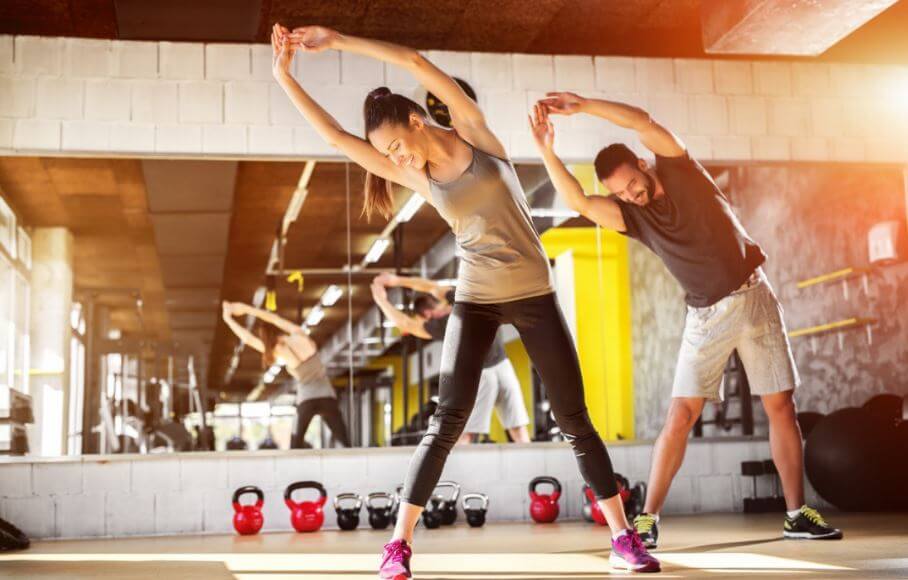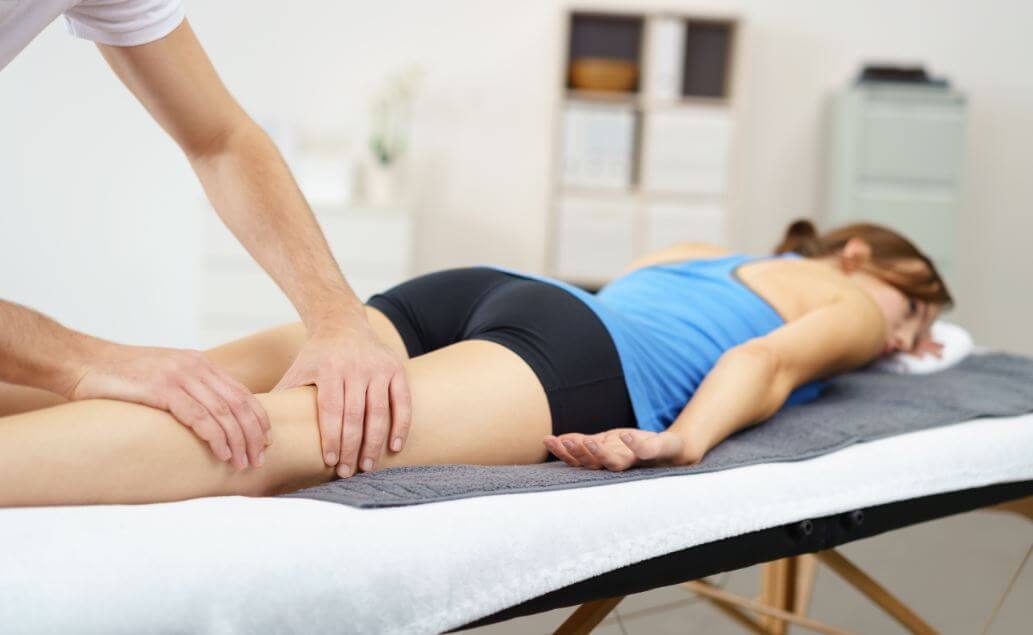Facilitate Muscle Recovery with these Exercises

If you want to make the most out of each workout, you should also prioritize muscle recovery. In fact, it’s during recovery where you obtain the desired results, not during training. Therefore, in this article, we’ll share how to facilitate muscle recovery with a few exercises. Take note of the following exercises and choose your favorite!
Muscle growth begins after you have finished working out. Therefore, muscle growth cannot occur without adequate recovery.
Rest after exercise is essential for muscle and tissue repair. It’s also key for building strength. Recovery should be of the utmost importance after weight training.
Furthermore, keep in mind that you should never work out the same muscle groups for two consecutive days.
Without recovery, a large part of your workout could be a waste of time. It should be a part of every training plan.
There are multiple strategies that athletes can use in order to promote muscle health. Aspects such as diet also play an important role in recovery. Knowing what to do and when to do it can help prevent injuries that would potentially delay your training for weeks.
The best exercises to facilitate muscle recovery
Below are a few great workouts that can help you facilitate muscle recovery
Temperature treatment
There is a reason why many gyms have jacuzzis and saunas. The heat that these relaxing environments provide can help promote the restoration of tissues after exercise. These environments also help to increase the body’s circulation.
Another less comfortable but extremely effective method is the use of cold treatments. One of the main benefits of cold treatments is that they can help to reduce the body’s core temperature. Another advantage is that they help to reduce inflammation and therefore cold treatments promote the process of healing.
Stretching
Stretching is a simple and quick way to help muscles. Sometimes, after an intense training session, your muscles may begin to hurt and feel sensitive.

Under these circumstances, we instantly avoid using and mobilizing the muscles that hurt. This, however, will only cause the sore muscles to become stiffer.
Stretching is one of the best techniques for athletes since it promotes muscle growth. That’s why you should stretch before and after each workout routine. Stretching will also improve flexibility.
Mindfulness
Mindfulness is another great way to recovery after intense workout sessions. Adding mental practices to an exercise routine can bring along many benefits for athletes.
Mindfulness and meditation can play a key role in helping you to relax after exercising. In addition, being mindful is a great way to reduce anxiety and clear the mind of negative thoughts.
Massages
Lastly, professional athletes usually opt for massages in order to facilitate muscle recovery after intense workouts. The same is true after participating in sporting events.
Receiving a massage can be one of the best muscle recovery techniques when it comes to athletes. Massages help improve the efficiency of the biological processes that facilitates muscle recovery.

In addition to improving circulation, a massage will also make you feel good and help you relax completely, both mentally and physically. You can start by trying out self-massage exercises using a foam roller in order to relieve tension.
There are many different techniques that can be used to massage specific muscle groups.
Before concluding, we would like to remind you that the most important aspect when it comes to recovery is listening to your body. Keep in mind that a recovery routine can have a great impact on your physical gains and performance.
It’s unfortunate that most people don’t have recovery routines after exercising. Don’t wait any longer, put the tips mentioned above into practice in order to obtain excellent results.
If you want to make the most out of each workout, you should also prioritize muscle recovery. In fact, it’s during recovery where you obtain the desired results, not during training. Therefore, in this article, we’ll share how to facilitate muscle recovery with a few exercises. Take note of the following exercises and choose your favorite!
Muscle growth begins after you have finished working out. Therefore, muscle growth cannot occur without adequate recovery.
Rest after exercise is essential for muscle and tissue repair. It’s also key for building strength. Recovery should be of the utmost importance after weight training.
Furthermore, keep in mind that you should never work out the same muscle groups for two consecutive days.
Without recovery, a large part of your workout could be a waste of time. It should be a part of every training plan.
There are multiple strategies that athletes can use in order to promote muscle health. Aspects such as diet also play an important role in recovery. Knowing what to do and when to do it can help prevent injuries that would potentially delay your training for weeks.
The best exercises to facilitate muscle recovery
Below are a few great workouts that can help you facilitate muscle recovery
Temperature treatment
There is a reason why many gyms have jacuzzis and saunas. The heat that these relaxing environments provide can help promote the restoration of tissues after exercise. These environments also help to increase the body’s circulation.
Another less comfortable but extremely effective method is the use of cold treatments. One of the main benefits of cold treatments is that they can help to reduce the body’s core temperature. Another advantage is that they help to reduce inflammation and therefore cold treatments promote the process of healing.
Stretching
Stretching is a simple and quick way to help muscles. Sometimes, after an intense training session, your muscles may begin to hurt and feel sensitive.

Under these circumstances, we instantly avoid using and mobilizing the muscles that hurt. This, however, will only cause the sore muscles to become stiffer.
Stretching is one of the best techniques for athletes since it promotes muscle growth. That’s why you should stretch before and after each workout routine. Stretching will also improve flexibility.
Mindfulness
Mindfulness is another great way to recovery after intense workout sessions. Adding mental practices to an exercise routine can bring along many benefits for athletes.
Mindfulness and meditation can play a key role in helping you to relax after exercising. In addition, being mindful is a great way to reduce anxiety and clear the mind of negative thoughts.
Massages
Lastly, professional athletes usually opt for massages in order to facilitate muscle recovery after intense workouts. The same is true after participating in sporting events.
Receiving a massage can be one of the best muscle recovery techniques when it comes to athletes. Massages help improve the efficiency of the biological processes that facilitates muscle recovery.

In addition to improving circulation, a massage will also make you feel good and help you relax completely, both mentally and physically. You can start by trying out self-massage exercises using a foam roller in order to relieve tension.
There are many different techniques that can be used to massage specific muscle groups.
Before concluding, we would like to remind you that the most important aspect when it comes to recovery is listening to your body. Keep in mind that a recovery routine can have a great impact on your physical gains and performance.
It’s unfortunate that most people don’t have recovery routines after exercising. Don’t wait any longer, put the tips mentioned above into practice in order to obtain excellent results.
All cited sources were thoroughly reviewed by our team to ensure their quality, reliability, currency, and validity. The bibliography of this article was considered reliable and of academic or scientific accuracy.
- Sesboüé, B., & Guincestre, J. Y. (2006, July). Muscular fatigue. Annales de Readaptation et de Medecine Physique. https://doi.org/10.1016/j.annrmp.2006.04.020
- Mehta, R. K., & Agnew, M. J. (2012). Influence of mental workload on muscle endurance, fatigue, and recovery during intermittent static work. European Journal of Applied Physiology, 112(8), 2891–2902. https://doi.org/10.1007/s00421-011-2264-x
This text is provided for informational purposes only and does not replace consultation with a professional. If in doubt, consult your specialist.








